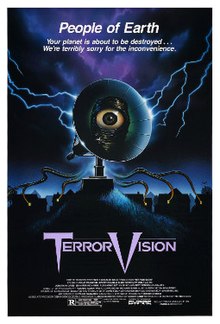
Terror of Mechagodzilla is a 1975 Japanese kaiju film directed by Ishirō Honda, written by Yukiko Takayama, and produced by Tomoyuki Tanaka and Henry G. Saperstein, with special effects by Teruyoshi Nakano. Distributed by Toho and produced under their effects subsidiary Toho–Eizo, it is the 15th film in the Godzilla franchise, serving as a direct sequel to the 1974 film Godzilla vs. Mechagodzilla, the final film in the initial Showa Era of the franchise before Godzilla returned nine years later in The Return of Godzilla, directed by Ishirō Honda and scored by Akira Ifukube before their deaths.
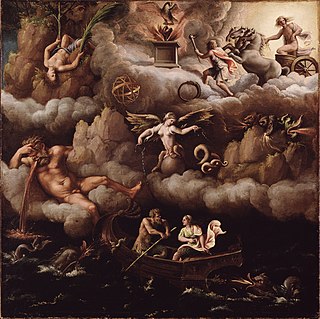
A monster is a type of fictional creature found in horror, fantasy, science fiction, folklore, mythology and religion. Monsters are very often depicted as dangerous and aggressive, with a strange or grotesque appearance that causes terror and fear, often in humans. Monsters usually resemble bizarre, deformed, otherworldly and/or mutated animals or entirely unique creatures of varying sizes, but may also take a human form, such as mutants, ghosts, spirits, zombies, or cannibals, among other things. They may or may not have supernatural powers, but are usually capable of killing or causing some form of destruction, threatening the social or moral order of the human world in the process.
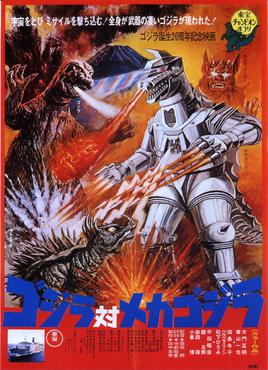
Godzilla vs. Mechagodzilla is a 1974 Japanese action-adventure kaiju film directed by Jun Fukuda, with special effects by Teruyoshi Nakano. Distributed by Toho and produced under their effects subsidiary Toho–Eizo, it is the 14th film of the Godzilla franchise, and features the fictional monster characters Godzilla, Anguirus, and King Caesar, along with the mecha character Mechagodzilla. The film stars Masaaki Daimon, Kazuya Aoyama, Gorō Mutsumi, and Akihiko Hirata, with Isao Zushi as Godzilla, Satoru Kuzumi as both Anguirus and King Caesar, and Kazunari Mori as Mechagodzilla. The film marks the first appearances of King Caesar and Mechagodzilla in the franchise.
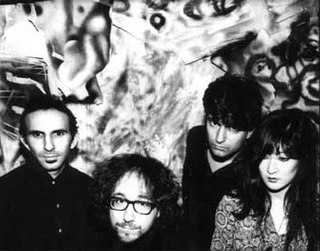
The Fibonaccis were an American art rock band formed in 1981 in Los Angeles. The band consisted of songwriters John Dentino (keyboards) and Ron Stringer (guitar), Magie Song (vocals), Joe Berardi (drums) and later Tom Corey (bass).
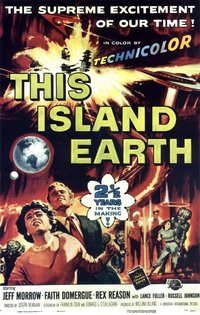
This Island Earth is a 1955 American science fiction film produced by William Alland, directed by Joseph M. Newman and Jack Arnold, and starring Jeff Morrow, Faith Domergue and Rex Reason. It is based on the 1952 novel of the same name by Raymond F. Jones. The film, distributed by Universal-International, was released in 1955 on a double feature with Abbott and Costello Meet the Mummy.
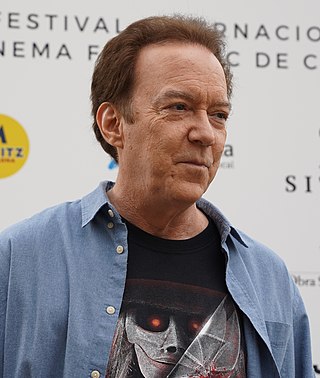
Charles Robert Band is an American film producer and director, known for his work on horror comedy movies.
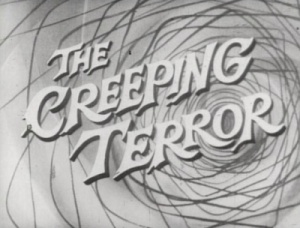
The Creeping Terror is a 1964 horror–science fiction film directed and produced by, and starring, Vic Savage. The plot is centered upon an extraterrestrial, slug-like creature that attacks and eats people whole in a small American town. Widely considered to be one of the worst films of all time, The Creeping Terror has become a cult film.

Godzilla: The Series is a 1998 American-Japanese animated television series developed by Jeff Kline and Richard Raynis. The series originally aired on Fox Kids in the United States between September 1998 and April 2000, and a sequel to Godzilla (1998). Malcolm Danare, Frank Welker, Kevin Dunn and Michael Lerner reprise their roles from the film.

Invasion of the Animal People is a 1959 Swedish-American black-and-white science fiction-monster film released to Swedish cinemas on August 19, 1959. The film was produced by Bertil Jernberg and Gustaf Unger, directed by American Virgil W. Vogel, and stars Barbara Wilson, Robert Burton, and Stan Gester. Written by Arthur C. Pierce, the film had most of its dialogue in English.
Monster Warriors is an original Canadian television series which aired on YTV in Canada and also on Jetix since April 2006 in the United Kingdom. It was created by Wilson Coneybeare and produced by Coneybeare Stories and distributed by Bejuba! Entertainment. The series concluded its run on July 26, 2008, with a TV movie titled Monster Warriors Finale on YTV.

Prophecy is a 1979 American science fiction monster horror-thriller film directed by John Frankenheimer and written by David Seltzer. It stars Robert Foxworth, Talia Shire and Armand Assante. Set along the Androscoggin or Ossipee River, the film follows an environmental agent and his wife filing a report on a paper mill in the river, not knowing that the paper mill's waste has polluted the river, causing mutations to man and beast alike. One of these animals, a local bear, runs amok in the wilderness.

Los Monstruos del Terror, also known as Dracula vs. Frankenstein and Assignment: Terror, is a 1970 Spanish-German-Italian horror and Sci-Fi film co-directed by Tulio Demicheli and Hugo Fregonese.. Eberhard Meichsner was also credited as a director only in the British promotional material, but by all accounts he was not actually involved.
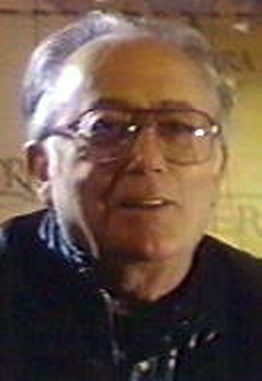
Albert Band was an Italian-American film director and film producer. He was the son of artist Max Band, father of filmmaker Charles Band and of film composer Richard Band and the grandfather of Alex Band, Taryn Band and Rachael Band.
Ted Nicolaou is an American film director, screenwriter and editor. His most famous directorial effort is the Subspecies film series. Apart from his feature film projects, he also works in television.

Bad Channels is a 1992 American science fiction spoof direct-to-video film, produced by Full Moon Features and released by Paramount Home Video. It is about two aliens who invade a radio station with the intention of capturing female humans, by using radio broadcasts. The hero is a DJ forced to combat the aliens alone when listeners think he is joking about the invasion.

Midnite Movies is a line of B movies released first on VHS and later on DVD by MGM Home Entertainment. The line was begun by MGM in March 2001 following its acquisition of Orion Pictures, which bought out Filmways, the owner of American International Pictures. AIP had a library of B movies from the 1950s and 1960s that were science fiction, horror, and exploitation films. The Midnite Movies collection was primarily derived from the AIP library but also included Hammer Film Productions, Amicus Productions, United Artists, Cannon Films, and Empire International Pictures films as well. The DVDs were first released as single films, but most later releases would be double features on single double-sided discs. Sony Pictures Home Entertainment later became owners of the MGM library and continued the "Midnite Movies" line with distributor 20th Century Fox Home Entertainment. All double feature titles released on the 20th Century Fox label were two-disc packages. By 2011, no new titles were forthcoming; the previous catalog titles slowly went out of print and the Midnite Movies website was taken down.
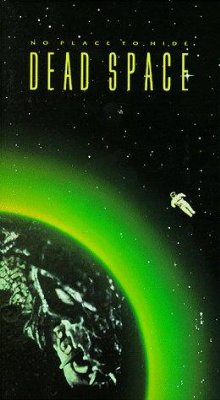
Dead Space is a 1991 American science-fiction horror film directed by Fred Gallo and produced by Mike Elliott.

The Mad Doctor of Blood Island is a 1969 Filipino horror film, co-directed by Eddie Romero and Gerardo de Leon, and starring John Ashley, Angelique Pettyjohn, Eddie Garcia and Ronald Remy.
